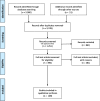UPDATE - 2022 Italian guidelines on the management of bronchiolitis in infants
- PMID: 36765418
- PMCID: PMC9912214
- DOI: 10.1186/s13052-022-01392-6
UPDATE - 2022 Italian guidelines on the management of bronchiolitis in infants
Abstract
Bronchiolitis is an acute respiratory illness that is the leading cause of hospitalization in young children. This document aims to update the consensus document published in 2014 to provide guidance on the current best practices for managing bronchiolitis in infants. The document addresses care in both hospitals and primary care. The diagnosis of bronchiolitis is based on the clinical history and physical examination. The mainstays of management are largely supportive, consisting of fluid management and respiratory support. Evidence suggests no benefit with the use of salbutamol, glucocorticosteroids and antibiotics with potential risk of harm. Because of the lack of effective treatment, the reduction of morbidity must rely on preventive measures. De-implementation of non-evidence-based interventions is a major goal, and educational interventions for clinicians should be carried out to promote high-value care of infants with bronchiolitis. Well-prepared implementation strategies to standardize care and improve the quality of care are needed to promote adherence to guidelines and discourage non-evidence-based attitudes. In parallel, parents' education will help reduce patient pressure and contribute to inappropriate prescriptions. Infants with pre-existing risk factors (i.e., prematurity, bronchopulmonary dysplasia, congenital heart diseases, immunodeficiency, neuromuscular diseases, cystic fibrosis, Down syndrome) present a significant risk of severe bronchiolitis and should be carefully assessed. This revised document, based on international and national scientific evidence, reinforces the current recommendations and integrates the recent advances for optimal care and prevention of acute bronchiolitis.
Keywords: Bronchiolitis; Guidelines; Infants; Prevention; Respiratory syncytial virus; Update.
© 2023. The Author(s).
Conflict of interest statement
The authors declare that they have no competing interests
Figures
References
-
- Centers for Disease Control and Prevention . RSV in infants and young children. 2020.
-
- Public Health England . Respiratory syncytial virus (RSV): symptoms, transmission, prevention, treatment. 2008.
-
- Shi T, McAllister DA, O'Brien KL, Simoes EAF, Madhi SA, Gessner BD, et al. Global, regional, and national disease burden estimates of acute lower respiratory infections due to respiratory syncytial virus in young children in 2015: a systematic review and modelling study. Lancet. 2017;390(10098):946–958. doi: 10.1016/S0140-6736(17)30938-8. - DOI - PMC - PubMed
Publication types
MeSH terms
Substances
LinkOut - more resources
Full Text Sources
Medical



